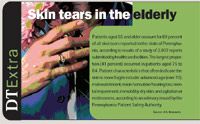- Acne
- Actinic Keratosis
- Aesthetics
- Alopecia
- Atopic Dermatitis
- Buy-and-Bill
- COVID-19
- Case-Based Roundtable
- Chronic Hand Eczema
- Drug Watch
- Eczema
- General Dermatology
- Hidradenitis Suppurativa
- Melasma
- NP and PA
- Pediatric Dermatology
- Pigmentary Disorders
- Practice Management
- Precision Medicine and Biologics
- Prurigo Nodularis
- Psoriasis
- Psoriatic Arthritis
- Rare Disease
- Rosacea
- Skin Cancer
- Vitiligo
- Wound Care
Article
Smorgasbord of treatment options
Systemic retinoids have a place for treating immunosuppressed patients with multiple AKs and squamous cell carcinomas.

"Cryotherapy is highly effective, quick, inexpensive and the outcome is not influenced by patient compliance. However, it is uncomfortable, only treats solitary lesions and can cause dyspigmentation," explains Dr. Ferringer, department of dermatology, Geisinger Medical Center, Danville, Pa.
"There are multiple other options available, and selection among them should be individualized based on a variety of factors, including lesion number, thickness and location, response to prior treatment, cost, convenience, expected compliance, the desire to treat concurrent photodamage, and impact of treatment on social and other activities."
In a review of medical options for AK treatment, Dr. Ferringer notes topical 5-fluorouracil (5-FU) can be used over a wide area to treat the current lesions as well as subclinical lesions.
This field effect makes it a good choice for patients who develop frequent AKs and have multiple, poorly defined lesions along with areas of severe photodamage. Topical 5-FU is available in various concentrations and formulations that are typically used for a treatment course of two to four weeks. With the exception of the 0.5 percent microsphere product (Carac, Sanofi Aventis) for which once-per-day application is recommended, the other formulations (Efudex, Valeant; Fluoroplex, Allergan Medical) require twice-daily use.

"The inflammatory response to 5-FU is its major disadvantage, and the severity of the reaction is greater in those with more extensive sun damage. However, patients may also find this treatment difficult because of the prolonged treatment and healing times," Dr. Ferringer says.
There is debate over the use of topical corticosteroids to manage inflammation. Since the mechanism of action is thought to be cytotoxic and not related to induction of inflammation, corticosteroids should not interfere with AK response. However, Dr. Ferringer says she restricts topical steroid use to the post-5-FU period, when it may be prescribed to hasten resolution of the inflammatory response.
Imiquimod
Topical imiquimod 5 percent cream (Aldara) is approved for the treatment of nonhyperkeratotic AKs on the face or scalp.
It is an agonist of toll-like receptor 7 (TLR-7), inducing production of TH1 cytokines, although some recent reports suggest it may directly induce apoptosis.
"There are some people who are TLR-7 deficient or who have a non-functioning receptor, and that may explain why some patients do not develop inflammation with imiquimod treatment and fail to achieve a therapeutic response," Dr. Ferringer tells Dermatology Times.
Topical imiquimod should be applied twice a week for 16 weeks. However, in clinical practice, it is used in widely varying regimens with respect to frequency and duration of application. The endpoint for treatment is early crust formation, and in a German study, patients who used the medication less frequently, but developed a more intense inflammatory response, had the best clearance rates.
"This suggests the magnitude of the inflammatory response may be more important than the duration or frequency of use. Subsequent studies have shown that despite erythema, few patients report significant discomfort," Dr. Ferringer says.










